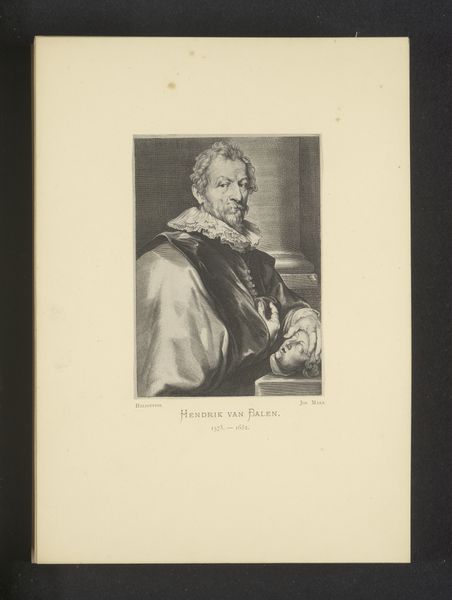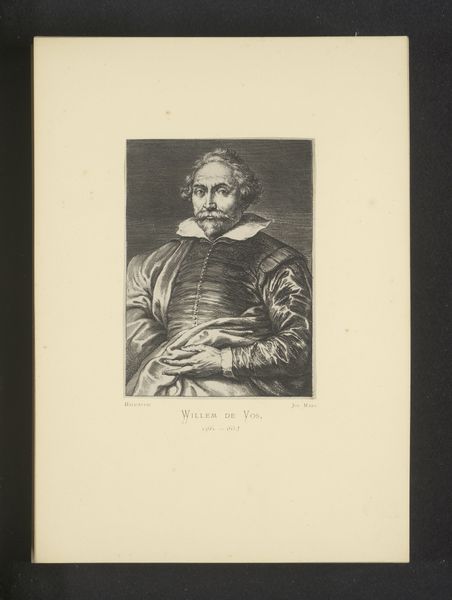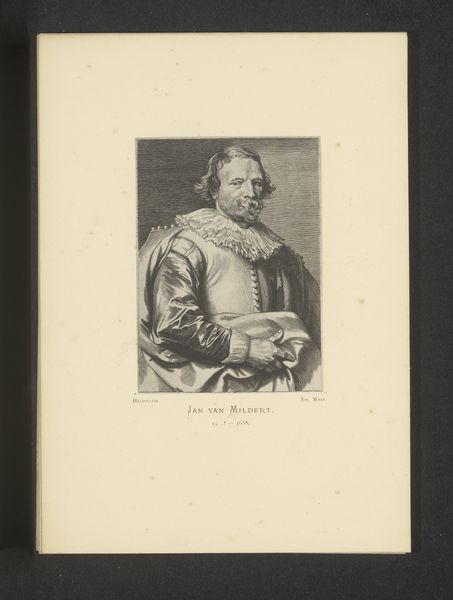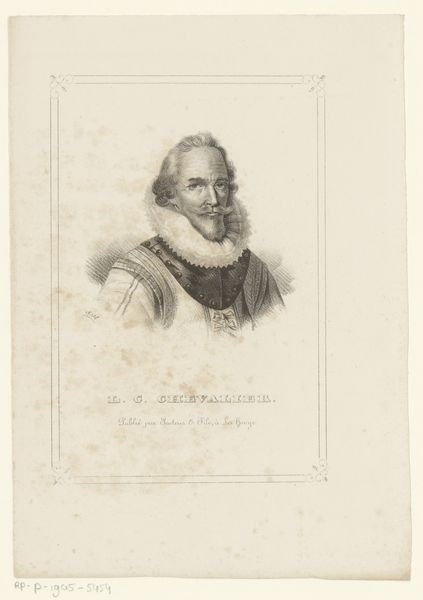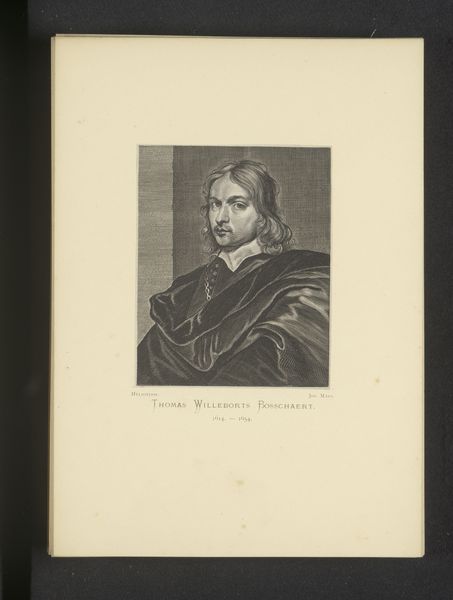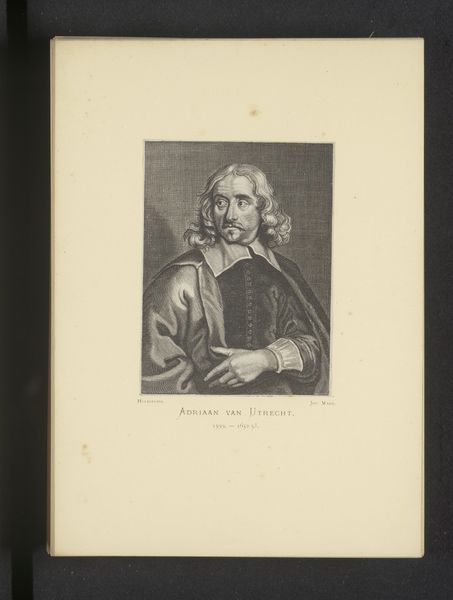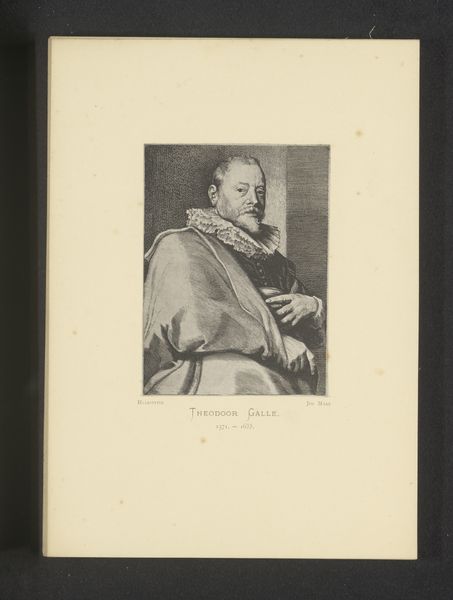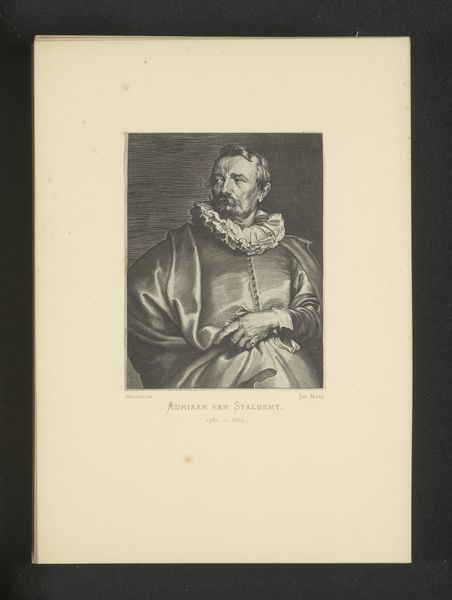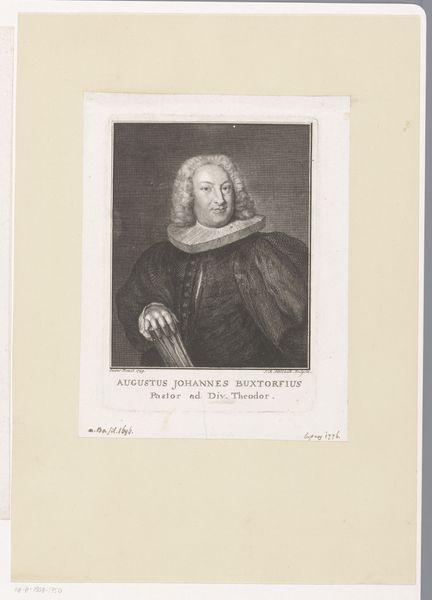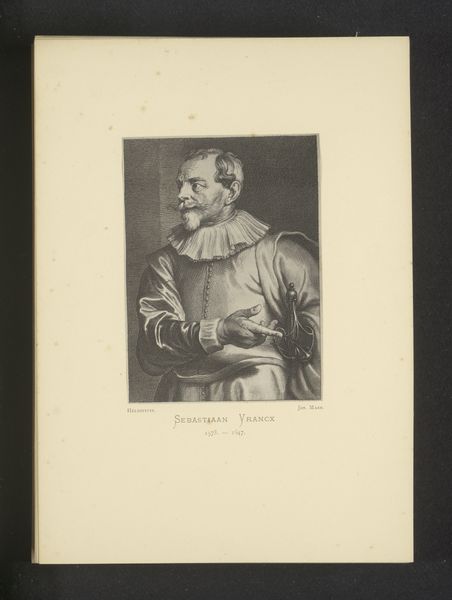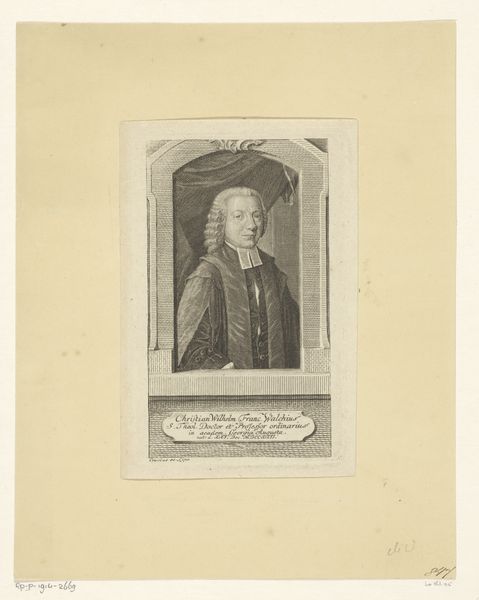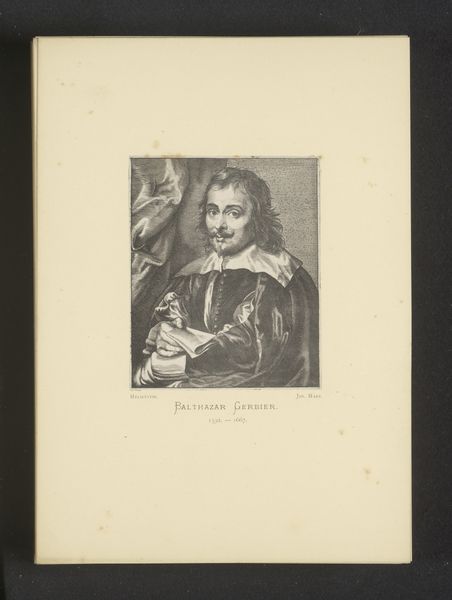
Reproductie van een gravure van een portret van Peter Snayers door Andries Jacobsz. Stock before 1877
0:00
0:00
Dimensions: height 113 mm, width 91 mm
Copyright: Rijks Museum: Open Domain
Curator: This engraving presents a reproduction of a portrait of Peter Snayers by Andries Jacobsz. Stock, and was created sometime before 1877. The detail achieved through the printmaking process is immediately striking. What's your first impression? Editor: Somber. The tonality, though constrained by the engraving medium, lends a serious air to the subject. There's also something quite engaging in how his gaze is directed just off to the side. Curator: Indeed. Snayers, as a painter of battle scenes, occupied a specific socio-political niche. Prints like this served to disseminate images of important figures but also speak to the development of reproducible imagery and evolving artistic markets. Editor: I’m particularly drawn to the handling of light and shadow. Observe how the engraver uses varied line weights and densities to create the illusion of depth, especially in the folds of his rather ornate collar. It is quite evocative, isn’t it? Curator: Certainly, it demonstrates a refined understanding of form, but it’s also crucial to consider the labor involved in producing these engravings. They were not merely artistic endeavors, but also a form of artisanal craftsmanship contributing to a complex visual culture. Editor: While the labor is undeniable, it's important to consider that craftsmanship here enhances the visual narrative. The controlled lines capture not just form but also a sense of texture and character in Snayer’s face. The medium mediates Baroque drama in its very materiality. Curator: And this "drama", was a crucial part of Baroque aesthetics and how it served certain social and political functions, aligning image production with the distribution of authority. Editor: Precisely. It makes you reflect on the visual qualities and how these interact to make it so compelling. Curator: Exactly, and how printmaking acted as an essential tool for circulating certain perspectives, which had a huge influence on shaping both artistic tastes and wider historical narratives. Editor: A potent reminder of how art objects operate within and actively shape the culture in which they exist. Curator: A sentiment which underscores a more holistic understanding of its social purpose as an accessible artform.
Comments
No comments
Be the first to comment and join the conversation on the ultimate creative platform.
